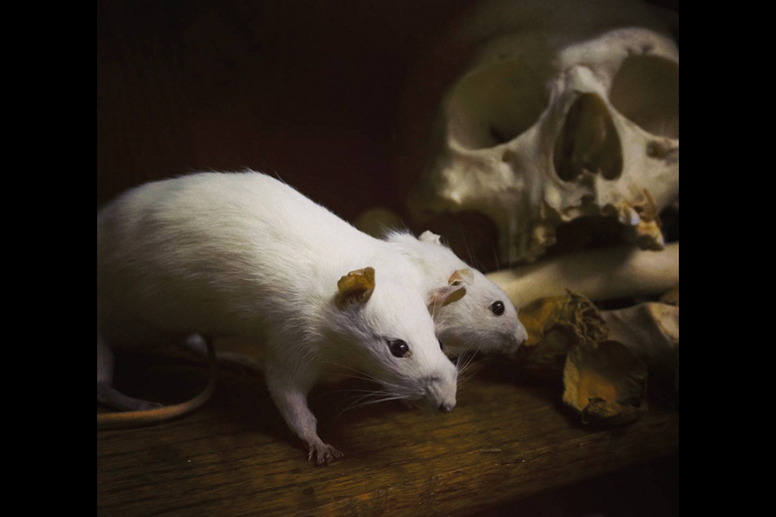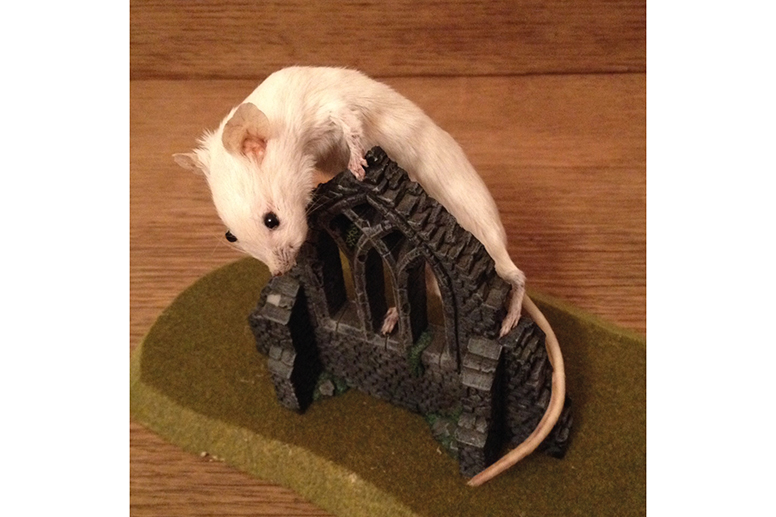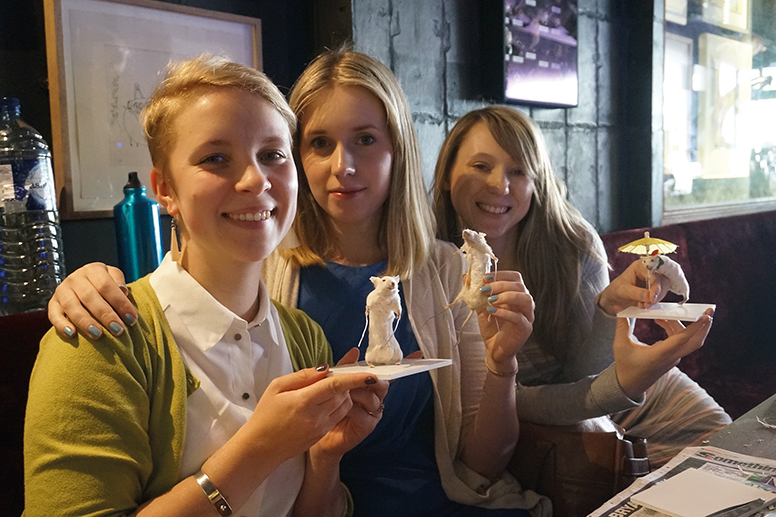Jenny Shelton speaks to taxidermist Tonja Grung ahead of an upcoming beginners class at the Junction
“Someone has just brought me a puff adder. He went on a six-hour walk, came across this dead snake and has asked me to taxidermy it for him. And now I’m preserving some bees. So it’s been quite an interesting morning.”
It’s not every day someone brings you a dead snake to stuff, but for taxidermist Tonja Grung, it’s a standard Monday. Striking, with red lips, jet-black hair and a colourful tattoo across her chest, Tonja works from a converted church in North London (“I can see two foxes looking at me, a skull and a few unfinished pieces”). The artist will be uncovering the secrets of taxidermy in a beginners class right here in Cambridge for the first time this month. Curious attendees will learn the basics of small mammal taxidermy, and will leave with their own anthropomorphic mouse.
“I don’t see it as a dead thing: you’re bringing something back to life”
“The mouse class is my most popular,” says Tonja. “Here, we’ll go through beginner taxidermy, from skinning to building the body: we don’t actually stuff the animals, we use a kind of wooden form. Then we’ll add some props: everyone really loves dressing them up in cute things and it’s great to see what they create.”
Tonja, who grew up in South Africa, has been fascinated by animals and their physiology since a very young age.
“Apparently – and I only recently found this out from my mum – I used to find dead animals in the garden and dissect them. I was really interested in their anatomy. Then I started collecting taxidermy and going to a couple of classes. I love the process of working with and learning about the animal, especially something I’ve never worked with before. For each piece I’ll research a lot about its habitat and how it behaves. And different mammals use different preserving techniques. I’ve done foxes, deer heads and next year in London we’ll be doing a class on peacocks and raccoons.”
What does Tonja say to people who feel squeamish about the idea?

“I have a little shop in Brick Lane, so I do see lots of people’s reactions. Some pull faces, but that’s about it. Actually my partner doesn’t like taxidermy – he doesn’t understand why I would want something dead in my house. But I don’t see it as a dead thing: you’re bringing it back to life and making something beautiful. We get a lot of vegetarians and vegans in the classes, and they’re happy as long as they know it’s been ethically sourced.”
Tonja gets her specimens from pest controllers, pet shops and as donations from the public.
“I do about ten commissions a month,” she explains. “The biggest bird I’ve worked on was a European eagle owl which had been someone’s pet. That was challenging. It took three sittings of about eight hours, and I had to freeze it in between.”
Is taxidermy something that’s becoming more popular?
“Yes, I think it’s because we’re seeing it more in the media and it’s becoming more ‘normal’. Years ago, you had to go quite far and pay a lot to do a class. Now, there are more classes and it’s more accessible.”
Tonja takes inspiration from the Victorians, often using antique display cabinets to conjure that feel of Gothic opulence and intrigue. But the Victorians didn’t always get it right – often misunderstanding how an animal looked or moved, resulting in some seriously questionable critters. If you haven’t seen the startled lion, Google it.
“I love the website crappytaxidermy.com,” she laughs. “But I also know how difficult it is to get the reference of an animal right, and of course they didn’t have the Internet to find tips and pictures. It reminds me that sometimes things don’t work out exactly as you want!”
Beginners Taxidermy with Tonja Grung, Cambridge Junction, 12 December, 4pm. Tickets £25.
Instagram @madefromthedead_taxidermy


